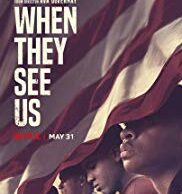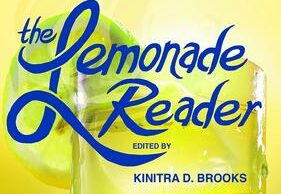Imagining Patsey’s Rescue by Harriet Tubman (Or, Marie Laveau’s Vengeance)
By Janell Hobson
Having seen 12 Years a Slave twice (first at a fundraising event and later at a private screening and discussion), I am struck by the story of Patsey (superbly portrayed by Lupita Nyong’o), the enslaved woman who is “prized” and “favored” by Solomon Northup’s second owner, Edwin Epps (Michael Fassbender in a chillingly predatory role). Northup’s survival narrative is a harrowing tale and poetically captured in Chiwetel Ejiofor’s sensitive portrayal. However, like so many of the slave narratives written or dictated by formerly enslaved African American men, it highlights the abject sufferings of black women who, as I had already noted in my review of the film, are often reduced to “ultimate victims,” to reiterate slave narrative scholar Frances Smith Foster.
I think of this, especially in the way movie audiences were audibly sobbing during the climactic scene in which Patsey is excoriated in an unbearably long whipping scene. Her punishment is for daring to leave the plantation without Epps’ knowledge, an action that emerged from a simple desire to keep her body clean: She simply wanted to borrow some soap from a friend (Mistress Shaw, played by Alfre Woodard) on the neighboring plantation since her mistress, out of jealousy, had deprived her of these basic necessities. Despite Patsey finding “favor” from her owner (if we want to categorize rape as such), despite her ability to out-pick any other enslaved worker when it comes to daily pulling in “500 pounds of cotton,” there is no safety for being a “good worker” or “finding favor” in the enslaver’s eye. Of course, director Steve McQueen drives home the point when, after the graphically violent scene, his camera redirects us to the piece of soap that caused this grave injustice.
I think of Patsey because she was a real woman, according to Solomon Northup, one who did not escape from slavery – unless she lived long enough to be emancipated (the story ends with Northup’s rescue from slavery in 1853, just 10 years prior to the Emancipation Proclamation). However, with this cinematic story, Patsey is now magnified among other black female icons from the slave era. I especially think of her when I weigh her story against my own longing for a Harriet Tubman movie (one where the black female body would not be relegated to “ultimate victim” status but cast instead as the ultimate hero) or my own adrenaline-rushed excitement over Angela Bassett’s latest performance as Marie Laveau, a worthy nemesis on F/X’s TV show American Horror Story: Coven, based on the life of a nineteenth-century New Orleans Vodou Queen, who uses her magical spells to raise the dead and avenge both enslaved and lynched victims alike and across time.
In contemplating Patsey’s suffering, I long for a story of how she got rescued by Harriet Tubman and avenged by Marie Laveau. A story that boldly mixes history with myth, fact with fiction, and truth with super-truths. Despite the victimizing narrative about a truly victimizing system that capitalized on the productive and reproductive labor of black bodies, the story that matters is the story of how our ancestors survived and transcended their victimization – against all odds.
In reality, Harriet Tubman’s Underground Railroad work never reached further than the Border States between the “Free North” and “Slave South,” so her ability to rescue Patsey from the “down river” hellishness that was Louisiana would have been impossible. And whether or not Marie Laveau, a free woman of color, could avenge for the sins committed against her is mere conjecture. The dilemma presents itself: How do we honor the historical truth of women like Patsey entrapped in systems of racial, sexual, and class oppressions while fulfilling our deepest desires for justice for black women, even though Patsey’s story confronts us with uncomfortable truths about sexual victimization – both hers and ours and, yes, even our larger-than-life figures?
How do we situate Patsey’s narrative alongside the grander, dehumanizing myth of black female hypersexuality – a myth that even managed to taint the legendary Harriet Tubman, whose triumphal feats of rescuing nearly 100 bondspeople before the Civil War and 750 more during the war got undermined by a “sex tape,” rather than magnified for the big screen? Despite the over-the-top dramatics offered in television’s faux-Vodou-ceremonial rituals that embody Marie Laveau’s powers, her primal scream captured all the rage I felt for the Patseys in history. Hell, I want to raise the dead too for how this suppressed narrative has been handled and passed down to us in demeaning tales of “Jezebels” and “bed wenches.” When do we get that incredible cinematic story of Patsey’s pain and suffering alleviated and avenged? What, exactly, are the “permissible” images of black women from the slave era for our own contemporary consumption and contemplation?
During post-screening discussions, certain audience members expressed discomfort and discomfiting interpretations about the opening scene of the film, which featured a light-skinned enslaved woman (an unnamed character who disappears altogether from the rest of the film) who assertively initiates a sex act with Solomon Northup sleeping next to her. Solomon is quite reluctant but eventually complies, bringing temporary relief for the woman and heartbreaking sadness for Solomon, who then flashes back to his earlier life with his wife and children back in Saratoga, New York, before he was kidnapped into slavery in 1841. What I imagine was a scene that McQueen created to capture these bonded people’s deepest (and most human) cravings for love and desire, others in the audience saw a perpetuation of black sexual stereotypes. One person, invested in preserving Northup’s legacy, was offended that this scene would be included since it undermined what to her was the “truth” of Solomon’s faithfulness to his wife. Another audience member thought it was significant that the woman in the scene was a “mulatto,” thereby suggesting the stereotype of the lighter-skinned black woman as “sexual temptress” for both the white and black man. The public forum, in which silence greeted both statements, certainly indicated our reluctance to discuss sexual politics or to challenge respectability politics.
Perhaps this is why no one discussed the rape scene between Epps and Patsey, a scene that was mostly framed through the extreme close-up shot on Epps’ orgasmic yet pained face, while we barely see Patsey’s own facial expression, except at the end when she is laid bare like a lifeless doll. No close-up for her! Indeed, the focal point for much of Patsey’s suffering – including the infamous whipping scene – is on her body, from scarred back to disfigured eye (at the hands of her mistress). Patsey’s body is the object of our horror and pity, while her internal reflections remain hidden.
As brilliant as this film is, and as important as it was for both McQueen and screenwriter John Ridley, to include Patsey’s story alongside Solomon’s, I find it curious that McQueen did not delve further into their intimate lives (nor are the other bondspeople given much of a voice except through songs). What if McQueen had taken artistic license and inserted a “romance” between Patsey and Solomon, for instance, even if only to create desire, love, intimacy – necessary emotions to contest dehumanization? What if Patsey had been that unnamed woman in the opening sex scene? Could she have later emerged as the martyred heroine that she is quickly becoming in our post-film discussions?
Patsey does not desire Edwin Epps, and in maintaining a platonic relationship with Solomon, she transcends “sexual temptress” status by serving only as Epps’ ultimate victim. What sexual agency does Patsey have, or Solomon for that matter? What does Solomon’s “faithfulness” to his wife mean in a system where both enslaved women and men did not control their own sexuality, where their owners could randomly couple and separate lovers on a whim? Where, indeed, Epps – who was ready to battle Solomon like a bull territorializing his sexual ownership over Patsey simply because Solomon exchanged more than two words with her – would obsessively undermine such a budding romance, if they were so inclined. Would such a “romance” represent resistance if they did pursue it, or would we – the audience – also be invested in respectability politics: in which we demand Solomon Northup’s faithfulness to his wife, despite his 12-year-absence from her, and in which we demand Patsey’s sexual virtue?
In maintaining a faithful adaptation of Northup’s narrative, McQueen missed some fruitful developments of subtext that a Victorian moral sensibility muted; a contemporary artist needed to fill in the gaps and silences of a narrative that Northup produced under the white abolitionist gaze and out of respect for his family. Because of this, we still encounter simplistic divides between an unprejudiced “Free North” and racially oppressive “Slave South,” along with virtuous heroes and martyrs. The film is extremely stark and powerful, but outside of the brutal picture of slavery, McQueen needed to dig deeper into the interior lives of bondswomen and men. Patsey’s story still needs to be more fully realized: where she is more than an ultimate victim and a woman with agency enough to carve out her own path for survival. Maybe then I could accept her historical truth without Tubman or Leveau’s intervention.
*I am grateful to Tamika Carey, Brittney Cooper, and Rebecca Wanzo for their contributions to conversations that helped flesh out my ideas for this piece.
_______________________________________________
 Janell Hobson is an associate professor in the Department of Women’s, Gender, and Sexuality Studies at the University at Albany. She has authored two books – Body as Evidence: Mediating Race, Globalizing Gender (2012) and Venus in the Dark: Blackness and Beauty in Popular Culture (2005) – and regularly blogs and writes for Ms. Magazine, including the cover story, “Beyonce’s Fierce Feminism,” in the Ms. Spring 2013 issue.
Janell Hobson is an associate professor in the Department of Women’s, Gender, and Sexuality Studies at the University at Albany. She has authored two books – Body as Evidence: Mediating Race, Globalizing Gender (2012) and Venus in the Dark: Blackness and Beauty in Popular Culture (2005) – and regularly blogs and writes for Ms. Magazine, including the cover story, “Beyonce’s Fierce Feminism,” in the Ms. Spring 2013 issue.




Pingback: Feminist reviews of “12 Years a Slave” | My Feminist Scavenging